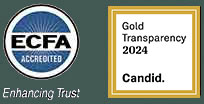For many church planters, raising funds is one of the hardest things they have to do. However, as difficult as fundraising can be, it is still necessary, and is actually an essential component of leadership for a church planter. In 1 Chronicles 29:14, King David, nearing the end of his life, is about to give a royal decree to his son Solomon. The decree is to build the Lord’s temple which would be a great offering. In verse 14 David says: “But who am I and who are my people that we should able to give as generously as this?”. In this scripture, King David puts himself and his people in their rightful place, and in so doing, exalted God in recognition that the King and all his people had come from the Lord.
Instead of seeing fundraising as begging, we should rather see the process as an invitation to prospective donors. It is an invitation for them, as stewards of what God has gifted them with, to serve in the furtherance of God’s kingdom.
Instead of seeing fundraising as begging, we should rather see the process as an invitation to prospective donors. Condividi il TweetThe three C’s of fundraising:
1. Be Clear
Leave no room for ambiguity. Be sure that your donors understand what you are asking for.
2. Be Concise
Do not communicate redundant information to your potential donors. It is not necessary to include every detail in your presentation.
3. Be Compelling
Nothing is bigger than sin and that people who are separated from God are going to live in isolation from God for all of eternity. Try to identify the idols of the context you find yourself in, especially the idols of the hearts of those you are aiming to reach. Being able to identify these idols and to making them tangible to your audience will allow the donors to feel like they’re part of solving the problem. Donors love to solve problems. Therefore, talk in detail about how you plan to solve the problem.
Donors love to solve problems. Condividi il TweetAs a church-planter who is sharing the Gospel, what results are you hoping to see? For example, Rooted Fellowship, led by One Mokgatle, is Gospel centred, disciple-making and transcultural – the latter aspect tries to solve a problem by telling the grand narrative of the context that Rooted Fellowship finds itself in. Therefore, Rooted Fellowship can see the light of Jesus coming through when relationships across racial and cultural lines take place through the Gospel.
Focus on people as much as possible. Donors are moving towards giving to people rather than programs. Painting a picture of the people you want to serve is helpful for the people you seek to raise funds from. It allows the potential donors to resonate with your vision. Do good research on how to be able to paint a grand and detailed picture without being unrealistic. It is vital to have programs in place, but even more important, talk about your people.
Donors are moving towards giving to people rather than programs. Condividi il TweetThe ten pitfalls of fundraising
Lack of clarity: Leave no room for ambiguity in your presentation. Make sure that your potential donor recognises the intent of your presentation.
Not being concise: If you prefer proposals, have more than a single page, but don’t present an entire book to your prospective donors. It is common that your prospective donor is known by other fund-raisers to be a generous giver, and most probably does not have the time to go through a lengthy proposal.
Not being compelling: Your potential donor will be demotivated to partner with you if you are not able to identify the solution that you are inviting them to partake in.
Lack of confidence: Fund-raisers often lack confidence due to their stance on fundraising. Again, be reminded that as a church planter, you are inviting your potential donor to serve in the furtherance of God’s kingdom and not begging for their resources. Let not your fear be anchored in man, but in God.
Asking for too little: Engage with people who are in finance so that you’re realistic in your asking.
Not knowing your numbers: You must be well-informed about the finances of your church plant, because donors are sensitive to the misuse of their resources.
Unwilling to spend the time, energy and resources to make money: There are no shortcuts to creating good and lasting relationships, and investing in face-to-face meetings is of great significance.
Giving the donors no or poor reports and feedback: To maintain a good relationship with a donor, providing good feedback is essential.
Failing to ask for referrals: It is not advisable to have a single donor. After asking whether the potential donor is willing and/or able to give or not, it is always good to ask if they know of anyone else who would be willing to give.
Not asking: The mistake many fundraisers make is preparing a presentation, but not making the ask. Examples of clear “asks” may include the following:
“Would you consider partnering with us?” or
“We ask that you pray for us and offer some of your resources to us, one of those being financial resources.”
Questions & Answers:
Question: How do you identify who to contact when it comes to fundraising?
Answer: Well, the answer is three-fold:
- Network. Do not doubt the importance of building strategic friendships. Guard your heart when identifying the strategic friendships you would like to pursue.
- Don’t only be driven by resources.
- Identify ministries that you are interested in and take the chance to set up meetings with those.
The commonality between the three aspects is that you cannot just sit on your chair. Do your research and actively engage other ministries. When you work on a partnership, it’s important to work out the terms and conditions of your contract, because you might see your church plant hi-jacked or having to fall into the vision of the donors, and not that which the church originally had.
Question: What are your thoughts on raising funds for different areas of ministries, especially in trying to become self-sustaining?
Answer: Sometimes creating different entities is helpful, although it’s a lot of work. It helps donors to see the need for that entity in the greater mission and they are then more willing to give. Identify why there is a need for that area of ministry and how the different areas of ministry serve the vision of the church plant.
Question: When you ask for funds, how do you assess whether you’re asking for too much or too little?
Answer: Assess the context that you are in and figure out if what you are asking for will be able to allow you to honour both the Lord and your family. Refer to the fifth point of “Pitfalls of Fundraising”. As a church planter, you will not know all the aspects necessary to keep a church running and/or to raise funds. Ask for input and advice from people who are knowledgeable about finance.
Question: What are some tips for making a good ask? Wrestle with what you’re fearing.
Answer: Apply the “Three C’s”! Ensure that you are clear, concise and compelling. Explore various endings to your presentation to ensure that your ask is obvious. Do not be too fearful of rejection.
Like salt is to a good meal, so prayer is to the fundraising process! As a church planter and fundraiser, pray for your intentions as you prepare. Pray that you prepare well, pray as you ask and pray afterwards. God’s people are called to give generously and to give in recognition that all they have been given comes from God. In the first chapter of his letter, James (1:17) reminds Christians that “every good and perfect gift is from above”. As children of God, we are therefore merely stewards – stewards of the kingdom of heaven.
Photo by Visual Stories || Micheile on Unsplash











